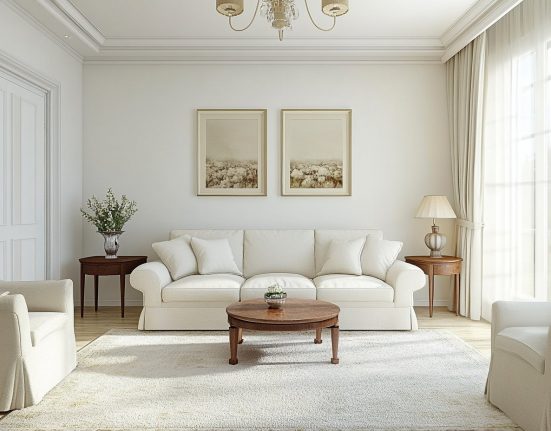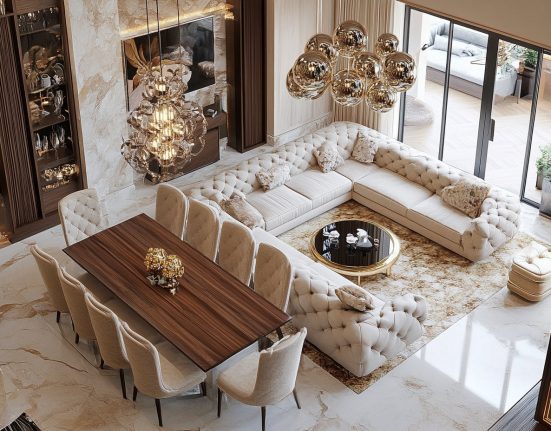We’re used to seeing tons of ‘before and after’ shots of home renovations, whether in magazines or on Pinterest or Instagram, and although it might look easy, a lot of thought and steps have gone into making the space work.
But help is at hand to make the process as seamless for you too. The interior design experts at Heal’s share their back to basics interior design rules to help you create your own dream home.
1. Give your sofas space
For a comfortable living space, think about practicalities as well as aesthetics. As a rule of thumb, you should allow 45cm between the seating and a central coffee table – any less than this can feel like a squeeze, but too much more can prove uncomfortable when reaching for a drink or book.
Sabina Miller, Head of Buying at Heal’s, adds: ‘When you’re choosing the coffee table itself, make sure it doesn’t overpower the room. The proportions are right when the table is about two thirds of the length of the sofa.’
2. Choose a statement hero piece
Every room needs one statement or hero piece; something that will surprise, delight and make an impact in your room, explain the interior design experts at Heal’s. This could be an oversized piece of furniture in a bold colour, a fabulous rug, a work of art, or a feature wall – something that guests will always comment on when they enter the room.
Sabina says: ‘Your hero piece is designed to steal the limelight. It should be the thing you fell in love with the moment you saw it, and that you might be prepared to spend more money on as a key sustainable piece of furniture or even a bold feature wall colour. If your stage-stealing piece is a bold colour, try using hints of it elsewhere for a cohesive look.’
3. Fake height
If you have low ceilings, choose low-profile furniture such as sofas and coffee tables to create the illusion of height. You can also mix low-profile furniture with tall, slim bookshelves that draw the eye upwards. Mixing different heights in this way will also create a relaxed atmosphere in your home.
‘To create an illusion of more space, paint the walls, skirting boards and ceiling in the same colour. This will blur the lines of where the walls end and the ceiling begins,’ Sabina suggests.
5. Choose the right artwork – and hang it correctly
When it comes to hanging pictures and paintings, don’t position them too high. They should have a human scale. The perfect height is at eye level, which is approximately 145cm from the floor to the centre of the picture.
Of course, there are exceptions to rule, as Sabina explains: ‘If you have a favourite, smaller picture, try hanging it above a side table or next to a lamp, which will give it a more intimate feeling. If you are hanging a gallery wall, the main picture should be hung at eye level, with the others arranged in relation to it.’
6. Add Mirrors
Not only do mirrors add light and depth to a room, but they can reflect views, visually expand a space, and can work as a hero piece in a room. Plus, they’re very practical and all in all, a great investment.
7. Get the lighting right
When choosing the right pendant or chandelier to hang above a dining table, aim for a fitting that is between half and two-thirds of the width of the table, say the experts at Heal’s. This will ensure everything is in proportion.
‘The same rule can be applied to long, slim light fittings,’ adds Sabina. ‘By maintaining the same half-to-two-thirds ratio, but applying it to the table’s length, the light fitting will be a harmonious part of the room.’
8. Dress your windows
Curtains should never hang at half-mast, to show yours off to their best effect, ensure that they either ‘kiss’ the floor or puddle elegantly,’ say the design experts at Heal’s. The combined width of your curtain panels should be one and a half to two times the width of the window itself. For extra-wide windows, it’s worth looking at double-width fabrics as there will be fewer fabric joins.
Sabina adds: ‘If you have a small window, give the illusion of something much larger by setting your curtains outside the edge of the window to frame it. Taking curtains all the way across a whole wall will give a room softness and a feeling of space. Don’t be afraid to go floor to ceiling either, short curtains will make your room look odd. If long curtains don’t suit the room, then go for a relaxed roman blind to give a window some casual elegant dressings.’
9. Mix up shapes
Most living rooms will have a lot of rectangles and squares; it’s simply the nature of those bigger furniture items such as sofas, sideboards and shelving units. If your room is looking like it has lots of lines and right angles, think about adding some different shapes such as circles. A round coffee table, a pair of round side tables, a round rug, a round wall hanging – the options are endless.
You could opt for a round mirror; it’s a great way to break up all those squares and rectangles in a living room as well as straight tile lines in a bathroom. ‘Go as big as you can,’ says Sabina. ‘Large-scale mirrors make a real statement and can visually enhance the sense of space in smaller rooms.’
10. Finally, take a step back
Something missing? If you can’t put your finger on exactly what your room need, step back and see the room as a whole.
‘All interior designers will tell you that viewing a room from a distance often makes it easier to see what needs to be added, replaced or removed,’ says Sabina. ‘Whether that is the empty wall that needs to be filled, the wall that needs a splash of colour or the corner that’s crying out for a luscious plant.’







